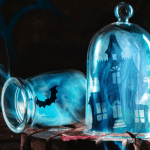 History
History  History
History  Technology
Technology Top 10 Everyday Tech Buzzwords That Hide a Darker Past
 Humans
Humans 10 Everyday Human Behaviors That Are Actually Survival Instincts
 Animals
Animals 10 Animals That Humiliated and Harmed Historical Leaders
 History
History 10 Most Influential Protests in Modern History
 Creepy
Creepy 10 More Representations of Death from Myth, Legend, and Folktale
 Technology
Technology 10 Scientific Breakthroughs of 2025 That’ll Change Everything
 Our World
Our World 10 Ways Icelandic Culture Makes Other Countries Look Boring
 Misconceptions
Misconceptions 10 Common Misconceptions About the Victorian Era
 Mysteries
Mysteries 10 Strange Unexplained Mysteries of 2025
 History
History 10 Things You Didn’t Know About the American National Anthem
 Technology
Technology Top 10 Everyday Tech Buzzwords That Hide a Darker Past
 Humans
Humans 10 Everyday Human Behaviors That Are Actually Survival Instincts
Who's Behind Listverse?

Jamie Frater
Head Editor
Jamie founded Listverse due to an insatiable desire to share fascinating, obscure, and bizarre facts. He has been a guest speaker on numerous national radio and television stations and is a five time published author.
More About Us Animals
Animals 10 Animals That Humiliated and Harmed Historical Leaders
 History
History 10 Most Influential Protests in Modern History
 Creepy
Creepy 10 More Representations of Death from Myth, Legend, and Folktale
 Technology
Technology 10 Scientific Breakthroughs of 2025 That’ll Change Everything
 Our World
Our World 10 Ways Icelandic Culture Makes Other Countries Look Boring
 Misconceptions
Misconceptions 10 Common Misconceptions About the Victorian Era
 Mysteries
Mysteries 10 Strange Unexplained Mysteries of 2025
10 Newer Christmas Traditions and Their Backstories
Holidays often have traditions, such as eating turkey for Thanksgiving, decorating with shamrocks for St. Patrick’s Day, and carving jack-o’lanterns for Halloween.
Christmas is another holiday with many traditions. Some, like enjoying candy canes, oohing and aahing at decorated Christmas trees, and telling a mall or other store-based Santa what is on one’s gift list, came about long before the 20th century began.
Other Christmas traditions, such as the ones listed below, started within the past 100 years. Read on to learn more about some of these newer traditions.
Related: 10 Holidays No One Celebrates
10 Watching Network Television Christmas Specials
The distinction of oldest Christmas special exclusively for television is neither Rudolph the Red-Nosed Reindeer nor A Charlie Brown Christmas, which premiered in 1964 and 1965, respectively. Rather, it is Mr. Magoo’s Christmas Carol, a cartoon that debuted in 1962. The special was based on Charles Dickens’s novel with a similar-sounding name that tells the story of a selfish, unsympathetic businessman named Ebenezer Scrooge until several ghostly visitors help him see the errors of his ways.
Among the actors who provided their voices to Mr. Magoo’s Christmas Carol was Jim Backus, who would go on to star in Gilligan’s Island the following year, and Morey Amsterdam, who simultaneously worked on The Dick Van Dyke Show while the Christmas special was in production.[1]
9 Conducting Toys for Tots Drives
The tradition of a big box with a Marine Corps Reserves Toys for Tots logo to place donations like dolls, toy trucks, and similar items began in Los Angeles in 1947. That’s when a Marine Corps Reserve member was strongly encouraged to start an organization that would distribute the dolls his wife had made to financially disadvantaged children when no such existing organization could be found.
In the campaign’s first year, 5,000 toys were collected and distributed. Since then and through 2023, roughly 677 million toys, books, and games have been given to 301 million financially disadvantaged children.[2]
8 Listening to Radio Stations’ Christmas Music Marathons
Around 1990, management at an adult contemporary radio station based in Phoenix with the call letters KEZ went against the advice of its consultants and researchers and began playing nonstop Christmas music upon the end of Thanksgiving. Contrary to those consultants’ and researchers’ beliefs, the format proved popular and since then, hundreds of radio stations have followed the same commercial-free Christmas music format, although the date these stations start airing the songs varies.
In 2024, Chicago radio station 93.9 FM began playing nonstop Christmas music on November 1, Cincinnati radio station 94.9 FM started doing so on November 18, and New York City’s 102.7 FM and Philadelphia’s B101 also began doing so around that date. The earliest non-satellite radio airing of Christmas music may have been Fort Wayne, Indiana’s 95.1 FM, which began playing all Christmas music in July amid the COVID-19 lockdown of 2020.[3]
7 Wearing Ugly Christmas Sweaters
Wearing ugly Christmas sweaters—such as ones designed with excessive amounts of glitter or pompoms or of Santa doing something highly out of character—appears to have begun in the early 2000s. Less glitzy versions of the apparel were popular in the 1950s and 1980s.
The current creators of ugly Christmas sweaters include fast food chains and creameries. In recent years, some companies have hosted or will host Ugly Christmas Sweater Parties, and at least a few ugly Christmas sweater parties have supported or will support a nonprofit organization.[4]
6 Shopping on Cyber Monday
In the early 2000s, the National Retail Federation discovered that online sales on the Monday after Thanksgiving were higher than the days leading up to it. Thus, it decided to come up with a catchy name for the day. After discarding ideas such as Blue Monday or Black Monday, Cyber Monday was created in 2005.
The federation attributed the increase in online sales on Cyber Monday to shoppers using (presumably faster) work computers to buy the items on their lists. Using a work computer also made it more likely the gift recipient would not know what they were getting.
In recent years, Cyber Monday sales have almost always increased from one year to the next. For instance, in 2019, such sales totaled $7.4 billion. By 2024, that amount had risen to $13.3 billion. Every year in between, sales had increased except in 2022, when sales dropped to $9.12 billion from $9.53 billion the year before.[5]
5 Showings of A Christmas Story for 24 Hours Straight
The wheels for this tradition were set into motion when the 1983 movie first aired on TBS, TNT, and TCM in 1991. Those three channels aired the movie six times from the day before Christmas until the day after that holiday Christmas in 1995. The number of airings among those same three channels increased to eight in 1996.
Then, in 1997, the 24-hour marathon began, but only on TNT. In 2004, when that network changed the formatting of its programming to drama, TBS took over marathon hosting duties, but since 2014, both have aired the day-long movie marathon.
In 2020, 32 million people viewed the movie at some point during the marathon. When asked to comment on the movie’s popularity more than a decade after its release, director Bob Clark noted the movie’s approach to an extraordinary time of the year with compassion and candor, and star Peter Billingsley (who played Ralphie) noted how many of the movie’s fans tell him they see their own life story in the movie’s plot. Recently, other Christmas favored have also jumped on the 24-hour move marathon bandwagon, most notably Elf and National Lampoon’s Christmas Vacation.[6]
4 Leaving Milk and Cookies for Santa
Families providing Santa Claus with milk and cookies in between dropping off presents in their homes began during the Great Depression of the 1930s. The hope was that by doing so, children would comprehend how important it was to give presents to others and also appreciate the presents they themselves had received.
One report indicates that Santa Claus likes all kinds of cookies, such as peanut butter, snickerdoodles, gingerbread, sugar, oatmeal raisin, and chocolate chip. There is no word on what type of milk—2%, oat, soy, etc.—he likes.
With so many food and drink options these days, it can be hard to determine how many calories Santa Claus consumes during his yearly gift-giving trip to people’s homes around the globe. One report’s conservative estimate of about several hundred calories per home concludes he would likely exceed recommended daily calorie allowances by several hundred thousand-fold, which is not something that can likely be worked off with all those trips up and down chimneys.[7]
3 Watching Radio City Music Hall’s Christmas Spectacular
The holiday-themed show that counts Vincente Minnelli among its creators premiered in the world’s largest indoor theater in 1933. The show still conducts the majority of its performances there and has, from its inception, included the dancing troupe known as the Rockettes and a nativity scene.
Over the years, the show has added modern features such as an LED light board and 3D effects. Annually, it uses about 1,200 costumes, some 30,000 red dots to give the Rockettes’ cheeks a rosy look, and slightly less than 14,100 batteries.[8]
2 Paying Homage to Rudolph the Red-Nosed Reindeer
Santa Claus’s reindeer with a nose that appeared to glow was created in 1939 by Chicago-based department store catalog writer Robert L. May as part of a children’s book-writing assignment. May had toyed with naming his creation Rollo, Rodney, Roland, Roderick, or Reggy before settling on Rudolph.
Some of the emotions May experienced in his own life—such as isolation from bypassing a few grades in school, resulting in him being smaller and younger than his classmates, sadness from his wife’s fatal illness, and failure from his inability to become a successful novel writer—an be seen in Rudolph when the reindeer experiences feelings of isolation and glumness.[9]
1 Reenacting Colonial Troops Delaware River Crossing
Each year for more than 70 years, hundreds of volunteers have gathered on Christmas Day along the Delaware River north of Philadelphia carrying weaponry and dressed in uniforms similar to those that George Washington’s army wore in 1776 when it launched a surprise attack on the Hessians during the Revolutionary War. Then, just as those troops did so that year, these volunteers cross the river into New Jersey.
The day’s events also include 1770s-themed activities and speeches that still occur even if the weather or river is not conducive to the river crossing reenactment. Spectators of the crossing and other events number in the thousands and come from around the United States and the world.[10]








